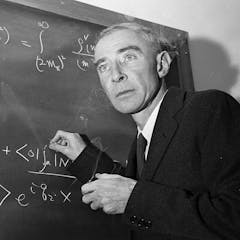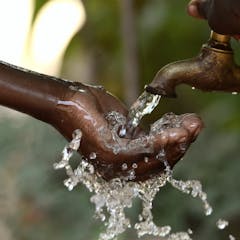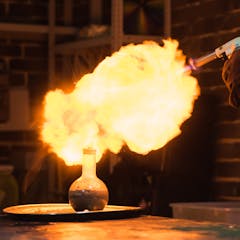
Articles on Chemistry
Displaying 61 - 80 of 358 articles

It’s not just the ingredients we should be concerned about. The devices themselves release chemicals that end up in our blood and urine.

Remember building model molecules with balls and sticks in chemistry class? You have J. Robert Oppenheimer to thank for that, as a quantum chemist explains.

PFAS can be filtered, but getting rid of the chemicals is a monumental challenge. A biochemist and soil scientist explain.

Two glass researchers explain how glass is made, the unique properties of glass and how those properties have allowed it to be a useful material to humans for thousands of years.

What’s the difference between gluten-free and gluten-reduced? And why does the country of production make a difference?

Do your ice taste funny? Is there ‘freezer burn’ on your meat? This is why your freezer probably isn’t as clean as you think – but it only takes a few simple steps to fix it.

People are becoming more aware of the health risks of laughing gas, but fewer people realise it’s a potent greenhouse gas.

Remember: the presence of something does not automatically mean it is harmful. It is the dose that makes the poison.

Researchers have developed a method for producing strong plastic materials by tweaking the chemical structure of superglue.

Astronomers have long known where water is first formed in the universe and how it ends up on planets, asteroids and comets. A recent discovery has finally answered what happens in between.

Technology will be a key part of solving the global water scarcity crisis.

From Archimedes’ principle to mass spectrometry, there are plenty of ways to test the purity of gold.

Astounding leaps forward in diagnostics, recycling and food are just a few areas of chemistry that were once considered science fiction

Why should you not beat your eggs in a plastic bowl? Can you save an over-beaten meringue? And is there a specific sugar you should use?

Graphene is superstrong and superconductive, and it has applications in everything from construction to electronics. But to date there have been almost no commercial uses of the material.

Inspiring our children to value and connect with science is key to improving society – and there are ways to do this safely in the classroom.

The chemical reaction that forms essential biomolecules like proteins and DNA normally doesn’t occur in the presence of water. Microdroplets provide a unique environment that make it possible.

What happens when drug testing experts come across a substance they have never seen before?

Click and bioorthogonal chemistry has enabled researchers to closely study how molecules work in their natural state in living organisms, with applications that span from cancer treatment to polymers.

The three scientists’ independent discoveries are helping to make the entire field of chemistry more environmentally friendly.
